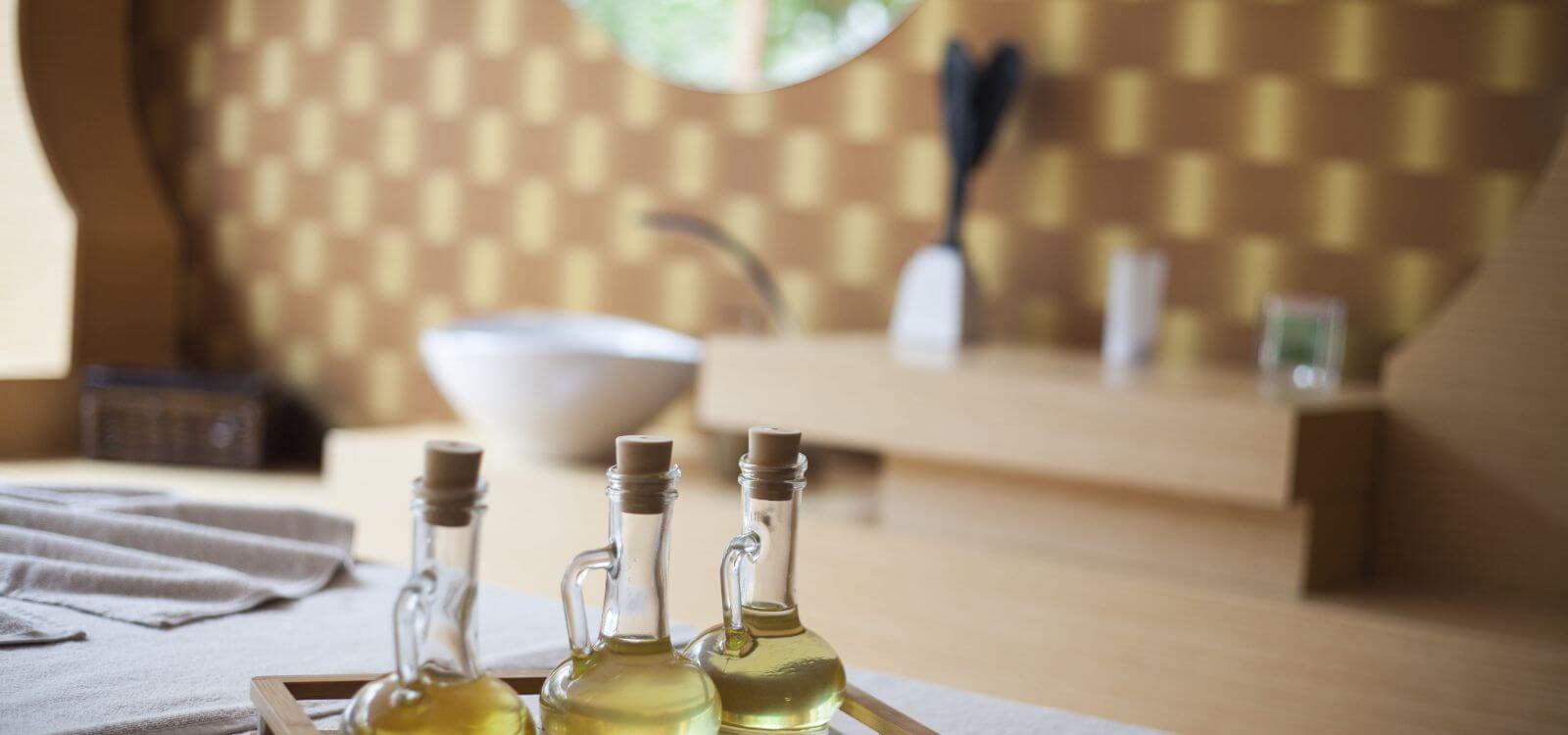What is Abhyanga?
First of all, let’s clarify what abhyanga is. Abhyanga is a special type of Ayurvedic oil massage that you can receive in an Ayurvedic clinic or spa. Traditionally, abhyanga is done by two practitioners giving massage in a synchronized fashion. However, sometimes abhyanga is done by one practitioner. Or, you can do abhyanga for yourself simply by massaging warmed oil into your skin from head to toe, moving in circular motions and taking time with the spots that need a little extra attention. This can be done on a daily basis. However, if your time is limited, you can set aside special time for abhyanga once or twice a week as part of your daily routine or dinacharya.Base Oils For Abhyanga
Abhyanga can be done with simple one-ingredient oils such as sesame, sunflower, coconut, almond, or even ghee! Though we often think of ghee for cooking and eating, it is a wonderful skin oil as well. In fact, you can use small amounts of ghee as a facial moisturizer. In addition, melted ghee or ghruta makes a rich, nourishing body oil that the skin easily absorbs. Ghee is one of the most easily digested oils—your gut likes ghee and so does your skin! If you want to perform abhyanga with one oil, simply put about 1/4 to 1/2 cup oil in an 8-ounce bottle. Place the bottle of oil in a saucepan of hot water until the oil is pleasantly warm. You can also fill a mug with hot water from the sink, and place your bottle inside to warm.Abhyanga Oil Recipe
If you want to infuse herbs into your abhyanga oil for added health and dosha-balancing benefits, here is one idea for an abhyanga oil recipe. This recipe is both calming and nourishing. For the dried herbs, it is best to use cut and sifted herbs rather than powder (herbs that are dried and in rough form, so to speak). However, you can use powdered herbs if that is what you have available. Ingredients- 1 ounce of dried herbs (use any combination of herbs such as ashwagandha, tulsi, lemon verbena, lavender, licorice, cinnamon, and/or shatavari)
- 6 ounces oil (choose from any combination of ghee, sesame, coconut, or sunflower)
- 16 ounces of filtered water
- Place your desired herbs in the bottom of a clean, glass jar.
- Pour gently warmed carrier oil into the jar, leaving about 1-inch of space at the top for the herbs to expand
- Seal with a lid and gently shake the herbs and oil.
- Place the jar in direct sunlight, like on a window sill.
- Let the oil infuse in the sun for 4-5 weeks, or a full lunar cycle.
- When ready, strain the herbs with a cheesecloth or fine mesh strainer. Pour the infused oil into glass bottles and store in a cool, dry place.

